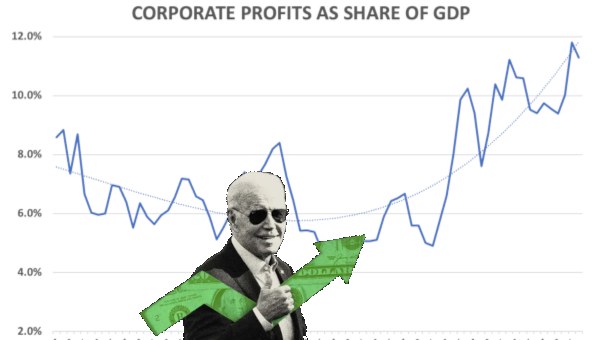Neoliberalism and the End of Shorter Work Hours
While in previous crises shorter work hours were discussed as a measure to combat growing unemployment, an astonishing feature of the current economic downturn from 2007 on was that work time reductions were nowhere on the political agenda. Not even in France and Germany, the champions of shorter work hours, both introducing a partial 35-hour week in the face of high unemployment in the 1980s and 1990s, was this the case. This is the more remarkable as temporary short-time working applied during the crisis in several European countries actually proved that shorter hours are a viable tool to prevent unemployment (even if still leaving mounting inequalities from capitalism still in place).1
While European capital welcomed short-time work during the initial phase of the crisis, employers quickly reinstated their demand for longer hours and more flexibility when growth started to pick up again in 2010. In a number of countries, governments even announced an extension of the retirement age as part of a series of austerity measures adopted to limit the budget deficits caused by the crisis. A lower retirement age and the introduction of early retirement were used in the 1980s to create employment opportunities for younger workers. In a complete reversal of earlier arguments, workers are now expected to work longer and more years to keep their jobs and receive a pension.
The Increase in Work-time
In the U.S., the average workweek in 2000 was, quite astonishingly, 1.6 hours longer than it was in 1970.2 By the end of the 1990s, American workers were putting in more than an additional week per year than in the early 1980s. In manufacturing, where the part-time rate is traditionally low, the difference between 1975 and 2000 amounted to more than two weeks. Sweden also shows a strong upward trend in yearly work hours, especially in the 1980s. The difference between 1990 and 2000 is 80 hours. Yet, in Sweden the growth can partly be explained by a growing number of women changing from part-time to full-time hours.
In Britain, yearly hours increased substantially in the 1980s (by 70 hours between 1981 and 1989), but fell back in the 1990s. Average yearly hours in 2001 were virtually the same as in 1981. Canada, too, experienced a surge in work hours in the 1990s with the effect that in 1999, workers put in 13 hours more per year than in 1991. In contrast to Britain, Canadian work hours fell back only slightly after 2000. In Germany and France average yearly hours were still falling in the 1980s and 90s, but either stagnated or slightly increased between 2003 and 2008.
The sea change in work-time policy is even more striking when we look at per capita work hours (thus including those with and without a job, or both the employed and dependent population). In the U.S., per capita hours have increased by 18% between 1985 and 2000, while Canada recorded the same level of growth between 1970 and 2008. In Britain, per capita hours virtually stagnated between 1980 and 2008. So, too, in Sweden between 1985 and 2008. According to the OECD: “The reversal of the long-term decline in hour per capita in the 1990s was widespread across OECD countries and regions, with only few exceptions still recording significant falls.”3 Average yearly work hours per worker include workers engaged in part-time work. If we look only at full-time hours, work-time more or less stagnated between 1992 and 2006 in Germany and between 2003 and 2008 in France. But there are remarkable changes within full-time hours. In Germany, for example, the proportion of male workers who put in between 36 and 39 hours per week decreased from 53% in 1995 to 21% in 2008, while the proportion of those working forty hours increased from 31% to 46% over the same period.
Among the few countries that still recorded falling per-capita hours in the 1990s were France and Germany. But in both countries the development came to a halt in the mid-1990s, with levels of per capita hours largely stagnating between 1995 and 2008. Another way of looking at the same development is the comparison of work hours spent by households rather than by individual workers. The combined (paid) workweek of married couples in the U.S. increased from 52.2 hours in 1970 to 63.1 hours in 2000.4
Important here are not only average work hours. Employment rates (i.e. the proportion of the population that works for money) and the number of years workers have to work before they retire are just as important. Because of an increasing retirement age and surging female employment rates, labour utilization in Europe has increased at faster pace in the second half of the 1990s than in the U.S. (as the European Commission proudly notes in its ‘Employment in Europe 2007’ report).5 The absence of shorter work hours in public debates in the core capitalist countries on possible remedies for the crisis of employment is the culmination of a longer process. In the past three decades the century long secular decline in work-time slowed down markedly. In most countries, it came to a halt. The OECD, IMF and the European Commission have welcomed this process as an improvement in the rate of labour utilization. Although they do not provide a clear definition of labour utilization, the term is supposed to reflect the intensity of work (usually measured in productivity) and the total number of work hours spent by a specific population (the rate of unemployment, the time spent for education, the length of working life, etc.). As such, it comes close to what Marxists understand as rate of exploitation.
The increase in the rate of labour utilization is an essential feature of the era of neoliberalism. Increasingly long, flexible and fragmented work hours are a major characteristic of the neoliberal mode of living. Despite remarkable differences in the length of the work-day, week and year, all developed countries have accepted the need to increase employment rates and to make work time more flexible, fueling labour utilization.
Work-time Polarization
Countries have, however, rarely changed legal or collectively agreed work-time limits during the neoliberal period. Instead, there has been a weakening of collective work-time standards through: the granting of concessions and exemptions; the erosion and decentralization of collective bargaining; the introduction of new forms of flexibilization which make it difficult to maintain control over work time (such as individual work time accounts); and the individualization of work hours through the introduction of opting-out mechanisms (such as the allowance of the 60-hour week in Ontario); and the acceptance of large amounts of overtime (as applied in France after 2002 to lessen the effects of the 35-hour week).
The de-standardization of work hours was complemented by a turn to workfare in welfare policies, forcing more people into employment and requiring them to stay longer before they retired. Individualization and flexibilization were based on accelerating competition, rather than on workers’ preferences. This considerably weakened working-class solidarity. However, because the changes were fueled by competition, the outcome was not an outright extension of the work day or week. Instead, the outcome was a polarization of work-time with a growing proportion of workers putting in either particularly long or short hours.
Britain stands out for its highly unequal distribution of work hours. Although the polarization diminished somewhat in recent years, it is still the case that less than a third of British employees worked between 30 and 40 hours in 2008. Further, 30% of male workers put in more than 45 hours per week, while 12% of women worked less than 16 hours per week. In Germany, 46% of male workers still worked 40 hours a week in 2008. But the proportion of male workers who work between 41 and 48 hours more than doubled between 1995 and 2008. Over the same period, the proportion of women working less than 20 hours increased by 60%.
In the U.S., the proportion of workers who work 40 hours a week decreased from 48% in 1970 to 41% in 2000. The proportion working 50 and more hours a week increased from 21% to 26.5% over the same period. Canada also recorded a growing polarization of work hours between the early 1980s and mid-90s. This was reversed somewhat between 1997 and 2006. In France and Sweden, work hours are distributed more evenly with a comparably small proportion of the workforce working less than 30 hours a week. But in France the proportion of men working 40 hours and more has increased from 20% in 2002 to more than 35% in 2008.
Work Time and Working-Class Solidarity
The erosion of collective work time standards was partly caused by employer offensives against trade unions and collective bargaining and by the adoption of anti-trade union legislation. However, trade unions themselves indirectly supported the transformation when they sacrificed shorter hours as part of concession bargaining, or accepted that work hours are negotiated on the company level rather than the sector level. With the acceptance of longer hours, even as temporary exception, trade unions surrendered to the logic of competition bargaining and at least implicitly acknowledged that longer hours can save employment.
Yet longer hours fueled unemployment rather than solving it. As a result the power of the trade union movement further deteriorated, leaving workers even more vulnerable to the demands of capital. In some countries workers’ representatives were still able to win shorter work hours in the 1990s. But with flexibilization and a shift toward company-based bargaining they paid a heavy price. From flexibilization it was not very far to individualization of work-rules and work-time, with the granting of exemptions and the further erosion of collective bargaining. Since flexibilization went hand in hand with marketization, short and flexible hours soon became long and flexible.
In the postwar decades trade unions repeatedly traded shorter hours for higher wages and growing (material) living standards. Theorists such as André Gorz criticized this attitude because rather than freeing labour from capitalist domination, the accelerating work-spend-cycle made workers even more dependent on capital.6 This cycle of accumulation was not only based on growing exploitation of labour but also of natural resources. Marx, for one, had already noted the similarities between the over-exploitation of labour and of the soil. Thus shorter work-time was advocated as a vital measure to move to a more sustainable form of human reproduction as well as expanding the realm of freedom from capitalist domination.
Since the 1980s, real wages in the core capitalist countries have only increased moderately, if they increased at all. Rather than trading shorter work hours for more income, working families now spend more hours at work to maintain their living standards. In this situation, it has become even more difficult for trade unions to convince their members to press for work-time reductions. However, shorter hours, not only in form of shorter daily and weekly work time, but also in form of paid breaks or leaves and early retirement, are still at the centre of any efforts to revive working-class solidarity.
Because they are not dependent on local costs of living, shorter hours can be – and should be – an international demand shared by workers in different countries (as shown by the original eight-hour day movement). By distributing available work amongst a larger number of workers, shorter hours not only benefit trade union members but also those without a job. This was, indeed, an important motive in the historical struggle for shorter work hours. Shorter work-time gives people the opportunity to start to think about and experiment with alternative, non-capitalist and more democratic modes of living. Some workers who reduce their hours as part of short-time working during the crisis, for example, do not want to go back to full-time work.
Furthermore, reduced work-time makes it easier to distribute paid and unpaid work more evenly between the genders. Not by accident, Swedish feminists demanded for the introduction of a general 30-hour week in the 1970s. Shorter work hours are crucial to re-form the capacity of the working-class movement to confront capital and to build a more equal and ecological sustainable society. •
Endnotes
- Steffen Lehndorff, “Before the Crisis, in the Crisis, and Beyond: The upheaval of collective bargaining in Germany,” Institute for Work, Skills, and Training, University Essen-Duisburg, 2010.
- Ellen R. McGrattan and Richard Rogerson, “Changes in Hours Worked, 1950–2000,” Federal Reserve Bank of Minneapolis Quarterly Review, 28: 1 (2004), p. 17.
- OECD, OECD Employment Outlook 2004. Paris, OECD, 2004.
- J.A. Jacobs and K. Gerson, “Understanding changes in American Working time” in Fighting for Time: Shifting boundaries of work and social life, eds., C. F. Epstein and A. L. Kalleberg. New York, Russel Sage, 2004, pp. 25-45.
- European Commission, Employment in Europe 2007 (Brussels: European Commission, 2007), pp. 127-8.
- See, for example, André Gorz, Capitalism, Socialism, Ecology, London: Verso, 1994.





